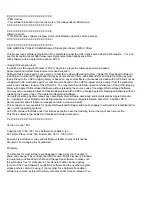
Action
1.
Be sure the memory is configured properly. For more information, see the product documentation to
determine the memory configuration requirements.
2.
Be sure no operating system errors are indicated.
3.
Update the BIOS to the latest version.
Server fails to recognize new memory
Symptom
The server does not recognize new memory installed on the server.
Cause
• The memory is not supported on this server.
• The memory is not installed according to the server requirements.
• The memory limits are exceeded for the server.
• The processor is not supported on the server.
• The memory is not installed or seated properly.
Action
1.
Be sure the memory is the correct type for the server.
2.
Be sure the memory is installed according to the server requirements.
3.
Be sure you have not exceeded the memory limits of the server or operating system.
4.
Be sure no Event List error messages are displayed in the Redfish or IPMI Event LOG.
5.
Be sure the memory is seated properly.
6.
Be sure no conflicts are occurring with existing memory.
7.
Test the memory by installing the memory into a known working server. Be sure the memory meets the
requirements of the new server on which you are testing the memory.
8.
Update the BIOS to the latest version.
9.
Replace the memory.
Uncorrectable memory error
Symptom
• A POST error message or a Redfish or IPMI Event LOG is displayed.
• Stop error or blue screen (Windows)
• Linux kernel panic
• A system “hang”
40
Troubleshooting
















































